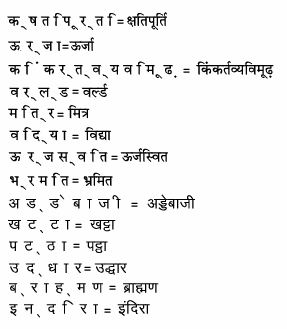माध्यम

परिचय
| माध्यम सॉफ्टवेयर के विकास की ज़रूरत क्यों पड़ी |
| माध्यम के विकासकर्ता बालेन्दु शर्मा दाधीच एक टेलीविजन
चैनल में कार्य करते थे जब उन्होंने देखा कि दूसरे टेलिविजन चैनलों की ही
तरह उस चैनल में भी हिंदी के कार्यक्रमों के लिए स्क्रिप्ट रोमन लिपि में
लिखी जाती थी। उन्होंने चैनल के जिम्मेदार लोगों से पूछा कि वहाँ पर हिंदी
में स्क्रिप्ट लिखने के लिए सॉफ़्टवेयर क्यों उपलब्ध नहीं हैं? उत्तर मिला
कि इसकी आवश्यकता महसूस नहीं होती क्योंकि वहाँ के एंकर तथा अन्य संबंधित
लोग रोमन लिपि में लिखे हुए हिंदी टेक्स्ट को पढ़ने के अभ्यस्त हो चुके
हैं। दूसरे, हिंदी में काम करने के लिए अलग से सॉफ़्टवेयर खरीदने पड़ते हैं
जो खामख्वाह चैनल के खर्च में बढ़ोत्तरी करेंगे। बालेन्दु को यह स्थिति नागवार गुजरी क्योंकि हिंदी में काम करने के लिए अंग्रेजी के अक्षरों का प्रयोग करना किसी भी रूप में सामान्य नहीं कहा जा सकता। क्या अंग्रेजी में काम करने के लिए कोई देवनागरी लिपि में स्क्रिप्ट लिखेगा? तब बालेन्दु ने निश्चय किया कि इस परिस्थिति को बदलने के लिए उन्हें ही पहल करनी होगी। उन्होंने हिंदी में तब उपलब्ध फॉन्टों का प्रयोग करते हुए मानक इनस्क्रिप्ट टाइपिंग पद्धति पर आधारित सॉफ्टवेयर विकसित करने का काम शुरू किया। इसे 'माध्यम' नाम दिया गया। चूँकि बालेन्दु का उद्देश्य इससे धन अर्जित करना नहीं बल्कि तत्कालीन परिस्थिति में बदलाव लाना था इसलिए उन्होंने इसे इंटरनेट पर निःशुल्क उपलब्ध कराया। कंप्यूटर के क्षेत्र की पत्रिकाओं (डिजिट और चिप आदि) के माध्यम से भी इसे निःशुल्क वितरित किया गया। बाद में सॉफ़्टपीडिया ने इसे 100 प्रतिशत सुरक्षित सॉफ़्टवेयर भी घोषित किया। इस सॉफ़्टवेयर की एक लाख प्रतियाँ लगभग पाँच वर्ष की अवधि में ही डाउनलोड कर ली गई थीं। तब से डाउनलोड की गिनती नहीं की जा रही है। |
| 'माध्यम' में क्या खास है? |
| माध्यम हिंदी में मानक टाइपिंग पद्धति इनस्क्रिप्ट का
प्रयोग करते हुए काम करने की सुविधा देता है, भले ही इसमें प्रयुक्त फॉन्ट
कृति देव 010 है जो कि टीटीएफ श्रेणी का फॉन्ट है जो एस्की 7 ASCII 7 पर
आधारित है। मूल रूप से इस फॉन्ट का प्रयोग करने वालों को रेमिंगटन टाइपिंग
पद्धति का प्रयोग करना पड़ता है लेकिन माध्यम इसके काम करने के तरीके को
बदल देता है और उसे भारतीय भाषाओं के लिए मानक घोषित किए गए इनस्क्रिप्ट
कीबोर्ड के अनुसार ढाल देता है। अर्थ यह हुआ कि अगर आप इनस्क्रिप्ट पद्धति से हिंदी में टाइपिंग करना चाहते हैं और कृति देव शृंखला के फॉन्ट आपको पसंद हैं तो आपको अपने कामकाज का तरीका बदलने की ज़रूरत नहीं है। जिस तरह आप यूनिकोड फॉन्टों का प्रयोग करते हुए हिंदी में इनस्क्रिप्ट कीबोर्ड लेआउट का प्रयोग करते हैं, वही काम 'माध्यम' के जरिए कृति फॉन्ट में कर सकते हैं। अगर आपने इनस्क्रिप्ट टाइपिंग सीखी है तो पुराने फॉन्ट में भी आप उसी तरह से काम कर सकेंगे। |
इनस्क्रिप्ट कीबोर्ड लेआउट
| इनस्क्रिप्ट कीबोर्ड लेआउट के जरिए कैसे टाइप करें |
|
The Inscript Keyboard:
The Inscript (Indian
Script) keyboard overlay was standardized by DoE in 1986. ("Report
of the Committee for Standardization of Keyboard Layout for Indian
Script Based Computers", Elec- tronics-Information & Planning
Journal, Voi. 14, No.1 October 1986).
A revision was done in 1988 by a DOE committee, when it was decided to compact the ISCII code by deriving some characters using a separate Nukta character. This required substitution of the Nukta character in place of the earlier "Transform" key. From frequency considerations it became necessary to mutu- ally adjust the positions of vowels, along with their Matras. The Inscript overlay can be used on any QWERTY keyboard. The Indian script legends should be shown in the right-hand side of a key, as the left hand side has the English legends. Temporary selection of the other overlay can be achieved by pressing the key along with the RIGHT ALT key (In IBM En- hanced keyboard), or the SYS-REQ key (In PC-AT 88-key keyboard). This can be very convenient for embedding a single character from the other overlay. The Inscript overlay contains characters required for all the Indian scripts, as defined bv the ISCII character set. The Indian script alphabet has a logical structure, derived from the phonetic properties. The Inscript overlay mirrors this logical structure. The overlay has also been optimized from phonetic/ frequency considerations. It is divided into two parts: the vowel pad on the left hand side, and the consonant pad on the right hand side. Within the vowel pad the vowels are given in the shift positions of the corresponding Matras. All the five main short vowels are given in the home row while their longer counterparts are located on the corresponding keys just above them. Since the vowel does not have a corresponding Matra, the vowel- omission sign, Halant, is given in the unshifted position. Halant is used for forming conjuncts, when it is typed in between con-sonants. Alternate hand action gets used in typing of a conjunct; as Halant is typed from the left pad, while most of the consonants are typed from the right pad. Similarly alternate hand action occurs while typing a Matra after most of the consonants. This considerably speeds up typing of a syllable. In the consonant pad all the primary characters of the 5 Vargs are included in the home row. The aspirated consonants are kept in the shift positions of their unaspirated counterparts. The non-nasal consonants of each Varg are contained in a pair of vertically adjacent keys. The main nasal consonants of the Vargs are contained in the bottom row of the left pad, along with the related Anuswar and Chandrabindu. The other non-Varg consonants are kept in the remaining positions of the right pad, according to their logical relations, and usage frequencies. All the characters needed for touch typing are contained in the bottom 3 rows. The top row contains some conjuncts meant for ease in sight typing. The conjunct character keys actually send out the corresponding basic characters. Due to the phonetic/alphabetic nature of the keyboard, a person who knows typing in one Indian script can type in any other Indian script. The logical structure allows ease in learning, while the frequency considerations allow speed in touch typing. The keyboard remains optimal both from touch-typing and sight-typing points of view, in all Indian scripts. |
विकास
| बालेन्दु शर्मा दाधीचः 'माध्यम' के डेवलपर |
माध्यम का विकास बालेन्दु शर्मा दाधीच ने किया है, जो हिंदी में कंप्यूटर और इंटरनेट आधारित कई सॉफ्टवेयरों, वेब सर्विसेज और वेबसाइटों के विकास के लिए जाने जाते हैं।
|
इनस्क्रिप्ट में कुंजियों का संयोजन
| इनस्क्रिप्ट में कुंजियाँ कैसे काम करती हैं |
|
How Inscript key combinations work: We highly recommend use of Inscript keyboard layout for typing Devnagari text, not only for ensuring standardization of text-rendering in Hindi but also for the sheer convenience it brings to computer users by a very innovative layout and inbuilt scripts to create complex letters dynamically. In this technology, when more than one letters are typed in succession, the system checks to see if they make a complex or half letter. If they do, it converts them into the target letter. Due to this, you will never need to remember keys that form complex letters (ksha, tra, shra etc) and half letters, because they are dynamically generated by the system itself. Here are a few examples: Half characters: You don't need to type half
characters individually. You just type the full character associated with the
target half character (for example, Complex characters: Just like in the above
case, complex characters also get generated dynamically when the system
encounters a combination of relevant keys. For example, Matras: In the Inscript style, you type all
the matras after the character with which the are to be associated is typed.
This rule is applicable even with Chhoti Ee matra ( Upper Ref: You can create upper ref ('r' on
top, as in the word A few examples of how Inscript key combinations work:
Golden rule of Inscript: To understand
Inscript better, you should remember a golden rule: All the letters are typed in
just they way they are spoken. Like, when we pronounce |
| डिस्क्लेमर Disclaimer |
| 'माध्यम' एक अच्छे उद्देश्य के साथ,
निःशुल्क उपलब्ध कराया गया है। इसे विकसित करते समय हर प्रकार की सावधानी
बरती गई है ताकि वह आम उपयोक्ताओं के लिए एक उपयोगी सॉफ्टवेयर बने। किंतु
यदि इसके प्रयोग के दौरान किसी तकनीकी कारण, कंप्यूटर संबंधी समस्या,
उपयोक्ता की गलती, कोड संबंधी बग़, या किसी भी अन्य कारण या संयोग से
उपयोक्ता के डेटा, कंप्यूटर आदि को कोई हानि पहुँचती है तो इसके लिए डेवलपर
उत्तरदायी नहीं है। डेवलपर किसी भी प्रकार के नुकसान की भरपाई का पात्र
नहीं होगा। यदि आपको
'माध्यम' के प्रयोग के संबंध में कोई भी शंका हो तो
कृपया इसका इस्तेमाल न करें। Madhyam has been developed for a good cause and has been made available to common people for free. All necessary precautions have been taken during its development so that it can become a useful tool for computer users. However the developer takes no responsibility for any loss of data or any damage inadvertently caused to his computer or any other physical or logical property. The developer will not be liable for any compensation or penalty in case of any loss caused due to Madhyam's use or any other associate reason whatsoever. If a user has any apprehensions regarding its use, he/she is advised to avoid using the software. |
 वे आंकिक विभाजन के विरुद्ध सक्रिय विश्वव्यापी तकनीकी समुदाय के सदस्य के रूप
में दो दिशाओं में सॉफ्टवेयर सोल्यूशन्स के विकास में जुटे हैं- 1.
हिंदी से जुड़ी सुविधाएँ, और 2. आम लोगों के लिए निःशुल्क सॉफ्टवेयर
सोल्यूशन्स (फ़्री एंड ओपन सोर्स)।
वे आंकिक विभाजन के विरुद्ध सक्रिय विश्वव्यापी तकनीकी समुदाय के सदस्य के रूप
में दो दिशाओं में सॉफ्टवेयर सोल्यूशन्स के विकास में जुटे हैं- 1.
हिंदी से जुड़ी सुविधाएँ, और 2. आम लोगों के लिए निःशुल्क सॉफ्टवेयर
सोल्यूशन्स (फ़्री एंड ओपन सोर्स)।
